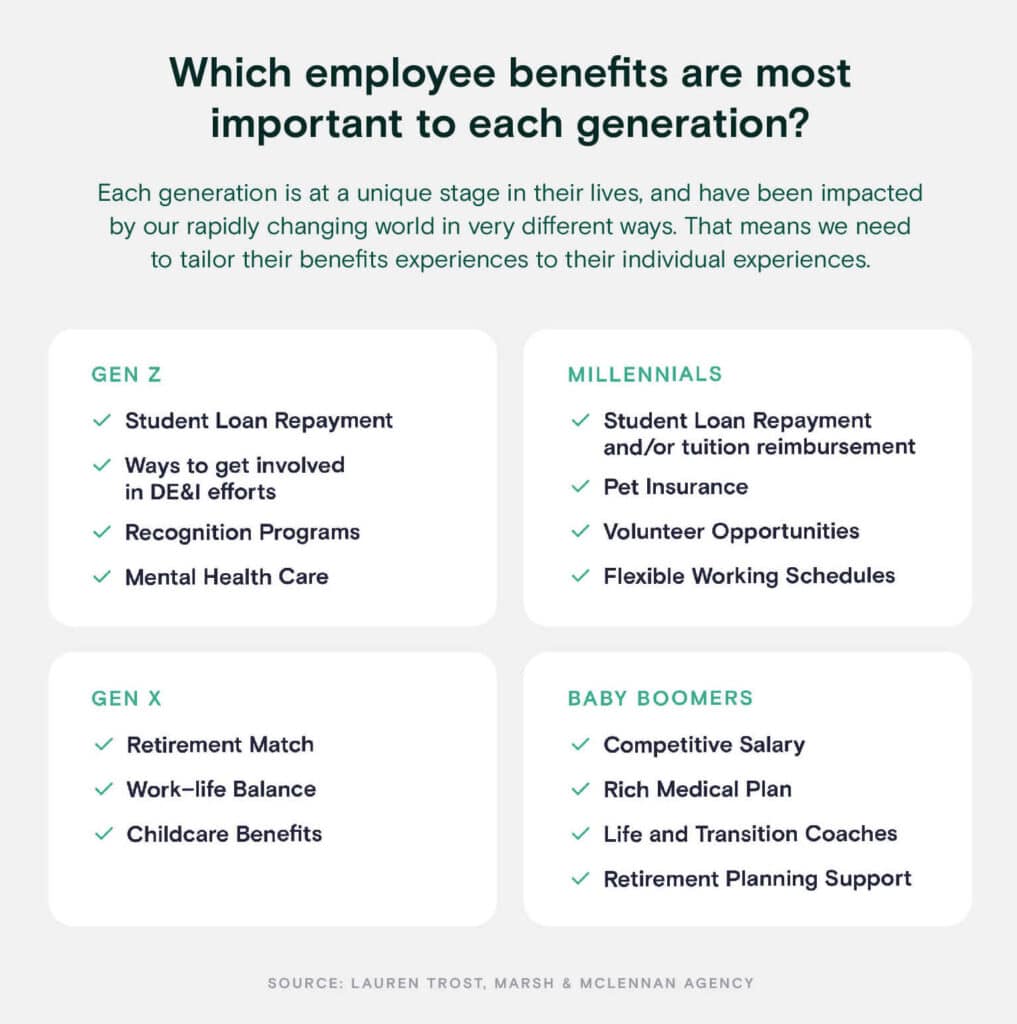Over the last few years, you’ve probably seen a headline (or 10) about employees’ increasing needs and expectations. And as an HR pro, you’ve had to adapt and shift your strategies to keep up. On top of that, employee satisfaction with benefits is the worst it’s been in a decade, falling to just 61% in 2023. So, what should you do?
Look no further than your benefits communication strategy. Data shows that many employees don’t know what to do with the benefits information they receive—and even an outstanding package won’t satisfy employees if they can’t navigate the offerings. To help employees make the most of their benefits, HR pros need to adopt consumer experience strategies that drive engagement and action.
You may be thinking, “But I’m an HR pro, not a consumer experience strategist!” Well, fear not, because we’ve created a course to help you develop a comprehensive comms strategy that meets employees where they are. Better Benefits Comms: Take Your Benefits Communication Plans from Blah to Bold is a short, self-paced course designed for HR and benefits pros like you who want to learn how to communicate employee benefits in a way that resonates.
It’s time to refresh your benefits communication strategy.
Here’s a glimpse at three key strategies we cover for crafting high-impact benefits comms that tackle major challenges.
Learn Your Audience
You can’t meet your employees where they are if you don’t know where they are.
- Which options are most relevant to which members of your team?
- Should they opt for a higher-deductible healthcare plan?
- How much should they contribute to their 401(k)?
- What options have the most value for them and their families?
There’s no one-size-fits-all solution, and elections depend on employees’ individual situations as well as their own priorities, cost–benefit analyses, and attitudes toward short- and long-term planning.
Obviously, there’s no way to determine each employee’s personal decision-making algorithm. However delving into your team’s composition can help you understand their diverse needs and plan your comms accordingly. Factors such as age, family situation, and geographic location influence both employees’ benefits priorities and the types of comms they prefer.

You already have a lot of demographic info to use as a starting point. And you can flesh out your understanding by simply asking employees for feedback about their priorities and preferences. Finding out what’s working for your team—and what isn’t—will help you figure out how best to guide them through the benefits process and what key considerations to highlight along the way.
Triage Your Information
Benefits are complicated. Employees need to have the right information to compare options and decide what works best for them. And unfortunately:
You may already feel like you’re giving employees all the information they could possibly use—and that’s probably true. In fact, it may be part of the problem. Your employees aren’t HR pros. They don’t have your expertise in deciphering the nitty-gritty details. If they feel inundated with information, they may not know what to prioritize. They may even tune out entirely.
To thread the needle between not enough and too much, you’ll need a holistic communication plan that divides information into bite-size chunks and places the most relevant information front and center. And that plan should cover the whole year to avoid an open enrollment info dump.
Personalize Your Messaging
Even streamlined, well-structured communication won’t resonate with employees if it reads like software terms and conditions. When was the last time anyone actually read those? Voice and tone are key to engaging your audience. While generic writing may seem like a safe bet for conveying factual information, dry, inaccessible prose may bounce right off your readers.
And it’s not just voice and tone that matter. Employees need to feel like you’re speaking to them, specifically, and that requires tailoring both your channels and your content. Email blasts are an easy catch-all, but Gen Z employees might not even open them. Or perhaps your less tech-savvy employees need extra support to navigate the interactive online resources you provide.

A good example of employer and employee communication should not only provide the right level of information but also present it in the right way for the folks you’re trying to reach. Building personalization into your comms plan will boost engagement—and since engaged employees make better choices, they’re more likely to feel satisfied with their outcomes.
Ready to Close the Benefits Communication Gap?
Dive deeper into these topics (and more!) to create a benefits communication strategy that works for your employees and delivers ROI on the awesome benefits package you’ve put together for your team. Enroll in Better Benefits Comms today to gain access to our free, self-paced course that will give you the tools to segment your communications so that the right people see them at the right time. Bonus: you’ll learn how to craft smarter benefits messages that actually resonate with employees and achieve greater equity by personalizing your benefits guidance.


